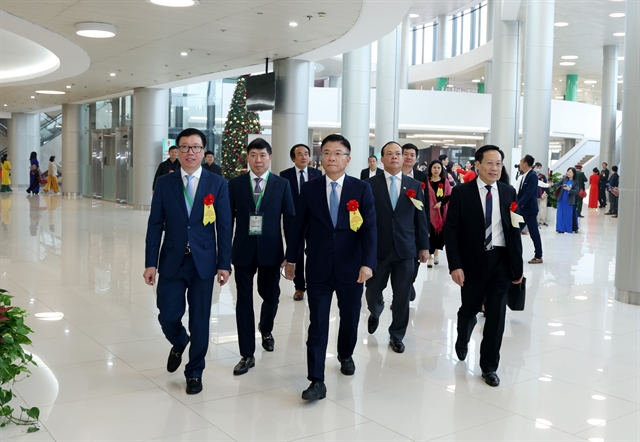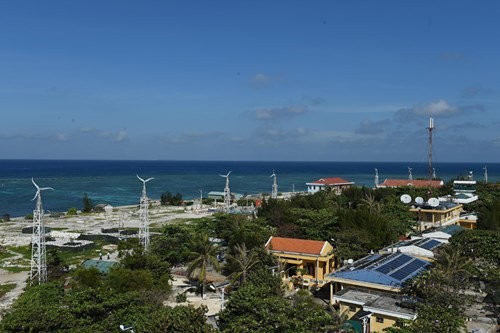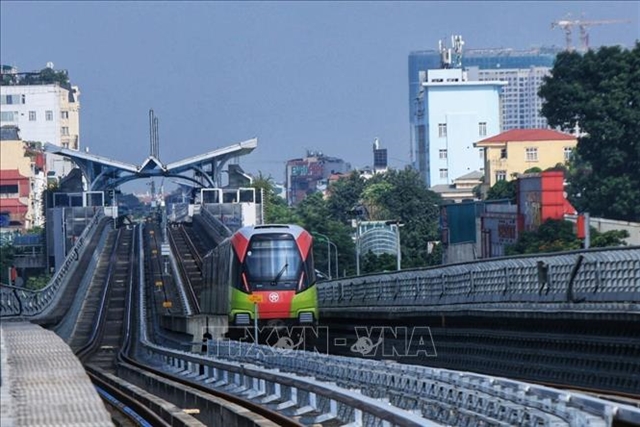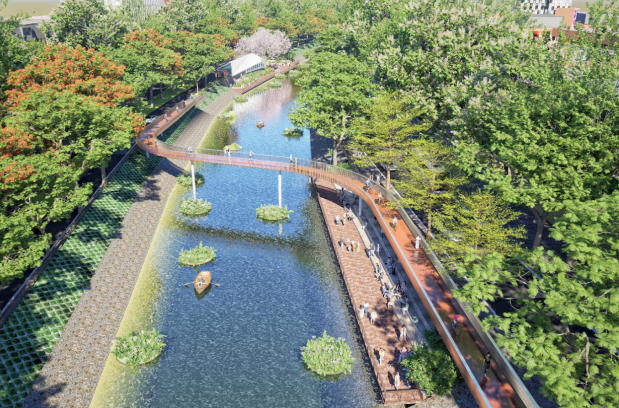 Society
Society

Việt Nam needs to develop a legal framework and feasible roadmap to turn its wind energy potential into reality, which will help to meet the country’s rapidly rising electricity demand, experts have said.
 |
| Việt Nam needs to develop a legal framework and feasible roadmap to turn its wind energy potential into reality, which will help to meet the country’s rapidly rising electricity demand. – Photo qdnd.com.vn |
HÀ NỘI – Việt Nam needs to develop a legal framework and feasible roadmap to turn its wind energy potential into reality, which will help to meet the country’s rapidly rising electricity demand, experts have said.
Tobias Cossen, head of GIZ’s project on supporting the up-scaling of wind power said that Việt Nam has great potential to develop wind power as the country possesses around 3,000 km of coastline with excellent wind conditions.
The Vietnamese government has approved several programmes to encourage the development of renewable energy in the country. As many as five wind farms with total capacity of almost 200MW are currently in operation. More than 50 other projects are in the construction and planning phase.
However, a number of regulatory and market barriers as well as the lack of capacity have been identified as obstacles for investors in wind projects, according to Cossen.
Specifically, the major challenge for wind power investment is the Feed in Tariff (Fit) of 7.8 US cent/kWh, which is too low for investors to overcome the perceived risks for wind power development.
“We all understand that the overall wind power market development and whether the government target for wind energy by 2020 could be reached or not highly depend on the level of FiT. Only with adjustments to a new FiT can the government target of 800MW by 2020 be reached,” he said.
In addition, the Standardized Power Purchase Agreement (SPPA) for wind power projects is not seen as bankable to international financing institutions due to unclear terms and definitions regarding the force majeure, curtailment, and punishment of delayed payment. With difficulties in getting access to international financing institutions, the project developers and investors face a lack of capital from local commercial banks for huge investment projects such as wind farms.
Finally, the development of wind power projects in Việt Nam and related approval process has remained complicated and vague.
Tobias Cossen said that even though there were general guidelines about project development, they have been applied differently in different provinces. This makes the application process time-consuming, unclear and not as transparent as it should be.
Moreover, a lack of high quality data and regulations as well as information on wind power has been a big challenge for new market development. This has led to a longer processing time for project development, appraisal and permitting, he said.
Phạm Phú Uynh, deputy director of the Institute for Urban Environment and Ecology at Nguyễn Trãi University and one of Việt Nam’s leading scientists on wind power said that the country must have a roadmap with modern technology to make wind power feasible.
One of the biggest challenges, he said, was the high cost of wind energy, which was caused by the high cost of manufacturing and importing wind turbines.
Uynh said the capacities of these turbines have been exaggerated compared to their actual manufacturing capacities. The turbine capacity does not only depend on the length of the turbine blades but also on other conditions, particularly wind speed.
For example, a five-wing wind turbine installed on a high building in Hà Nội, according to its manufacturer, can generate up to 100 Watts at a wind speed of 13m per second. But in fact, the wind speed and the turbine capacity was measured to be only 5.4 Watts.
Furthermore, there are already many windmills in operation in Việt Nam. The owners often imported technology from foreign firms. However, the imported cost is rather high, making the final electricity cost expensive.
"This is the result of Việt Nam depending heavily on foreign technology and not paying attention to developing the country’s own and training human resources in this field," he said.
Việt Nam’s climate is different from that of European countries, with more tropical typhoons and unstable wind speeds in coastal areas. This was a key reason that imported turbines often encountered trouble in their operation. This was something Vietnamese importers should consider carefully.
According to experts, some measures should be taken to improve the situation.
First of all, Việt Nam needed to build a suitable and effective support mechanism to trigger private investment. For example, the FiT should be adjusted adequately to attract investors – 10.4 US cent/kWh for onshore wind energy would make a big improvement.
Secondly, a supportive and lean legal-administrative framework can reduce administrative risks and related costs for investors and financing institutions. Vagueness in the formulation of procedures or licenses, such as the permit for inclusion in the power development plan, investment licence (with firm figures on land use and MW included), SPPA and generation licence of 10 years, will jeopardise banks’ ability to finance projects and thus the realisation of the projects in general.
The country need a good strategy on energy development, particularly the utilisation of traditional energy sources like hydro-power and thermo-power, in addition to the development of new sources like solar energy, wind energy and others. It is high time for Việt Nam to focus more on the use of renewable energy, particularly wind energy, with advanced technology and its own human resources, they have said.
Việt Nam has great potential to develop wind power. The highest potential areas are on the south central coast, central highlands and the Mekong Delta region with about 24GW. To make a comparison, Southeast Asia’s biggest hydro-power plant, Sơn La hydro power plant, has an installed capacity of 2.4GW, according to the World Bank wind atlas in 2011.
Currently five wind farms with total capacity of almost 200MW are in operation, among them the first 4 are grid-connected. REVN, the first wind farm, with capacity of 30MW, is located in Bình Thuận Province. Công Lý wind farm, producing 99.2MW, is a nearshore project in Bạc Liêu Province. Phú Lạc wind farm of 24MW also in Bình Thuận Province, Hương Linh of 30MW in Quảng Trị Province, and a diesel-wind hybrid project of 6MW on Phú Quý island in Bình Thuận Province. — VNS




